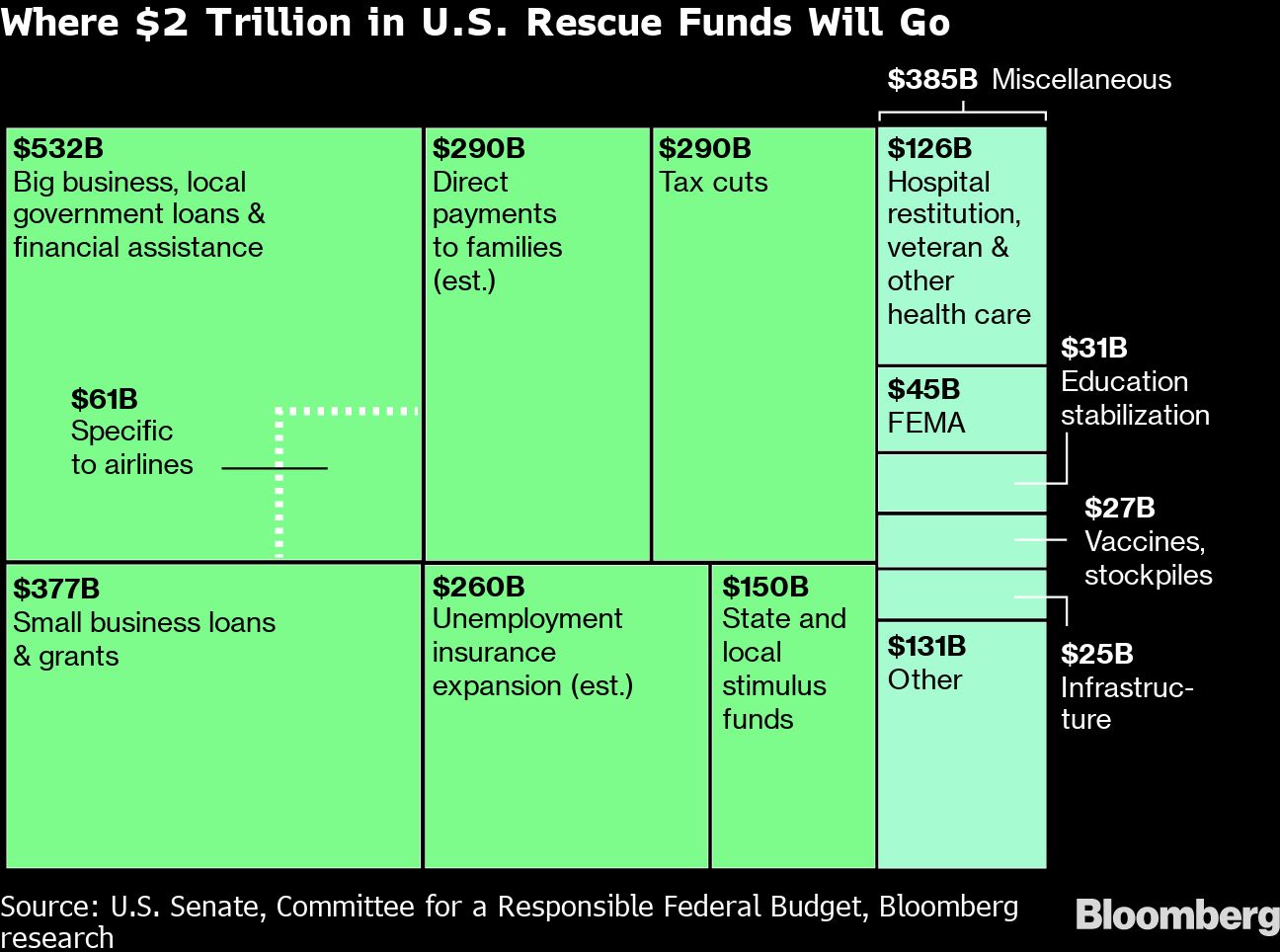In 2008, the federal reserve was able to come in and keep the zombie companies alive that otherwise would have gone out of business; people had their wrists slapped but the federal
reserve came riding to the rescue by backing the levered companies and encouraging people to go back to their spending ways. The USA has a lot of debt from the 2008 financial crisis
that they were able to ‘refinance’—heard of the idiom ‘kick the can down the road’?—not eliminate or clean up the mess, just keep the overcapacity in the system, and keep more people employed than otherwise would have been throughout the crisis. In essence, the USA did not come out better and stronger from the 2008 financial crisis, it just portrayed to the world that it had as it took on more and more debt. And now the USA is walking into this coronavirus event more indebted as ever. It has been trying to boost the economy by money printing and fiscal stimulus. Corporate America’s debt load is nearly 48% of the overall US economy. Consumer debt is higher than it’s ever been. The USA doesn’t have the same
amount of mortgage debt that it used to have but debt from other sources is filling that void now— there’s 1.6 trillion dollars of student debt, credit card debt in the USA increased to
over a trillion dollars, car loans in the USA hit the 1.2 trillion dollar mark in 2020. So yes, the USA doesn’t have the same amount of mortgage debt as it used to have in 2006-07 but they
have made up for it big time in other areas.

Even after the 2008 financial crisis, people improved their spending habits for 2-3 years but then once again went back to their previous habits. Personal Consumption typically forms two-thirds of the US economy, that’s the way its been year-in and year-out for a very long time, but in 2019 personal consumption rose to about 90% of the US GDP as the federal reserve did everything they could to elevate the stock market, keep risky assets prices up, keep people ‘feeling’ wealthy because people look at their 401ks and continue to spend beyond their means.

Right now the coronavirus is questioning this culture. The Federal Reserve in 2008 was able to take the interest rate down from 4.5% to the zero bound, they were able to inject stimulus into the economy whereas today they are starting at the zero bound. Already 2.2 trillion USD has been used by the fed and there are plans to bring 10 trillion USD more of fiscal stimulus.
Although the fiscal stimulus is the correct thing to do, the USA wouldn’t have been in such a terrible position had their policymakers not drowned the whole country in debt. To give you
perspective, India targeted to become a 5 trillion dollar economy by 2025-2030 based on its annual sustained growth rate before the coronavirus quashed this possibility. The USA is taking on the most debt to tackle the coronavirus situation than any other country, there is no concept of ‘free lunch’, you can ‘buy’ time and USA has ‘bought’ a lot of time over several years without paying for it and so I feel there are going to be ramifications.

Written by: Raghav Agarwal
Citations:
Bohn, H. (2011). The Economic Consequences of Rising U.S. Government Debt: Privileges at Risk. FinanzArchiv / Public Finance Analysis, 67(3), 282-302. Retrieved May 2, 2020, from www.jstor.org/stable/41303592•Schwarcz, Steven L., Rollover Risk: Ideating a U.S. Debt Default (January 30, 2014). Boston College Law Review, Vol. 55, No. 1, p.1 2014. Available at SSRN: https://ssrn.com/abstract=2307569 or http://dx.doi.org/10.2139/ssrn.2307569•Vuletic, Dominik, Next Global Crisis: Greatest Recession in the History of Capitalism is at the Doorstep (September 21, 2015). Available at SSRN: https://ssrn.com/abstract=2663630 or http://dx.doi.org/10.2139/ssrn.2663630•Lo Duca, Marco and Nicoletti, Giulio and Martinez, Ariadna, Global Corporate Bond Issuance: What Role for US Quantitative Easing? (February 18, 2014). ECB Working Paper No. 1649. Available at SSRN: https://ssrn.com/abstract=2397787




